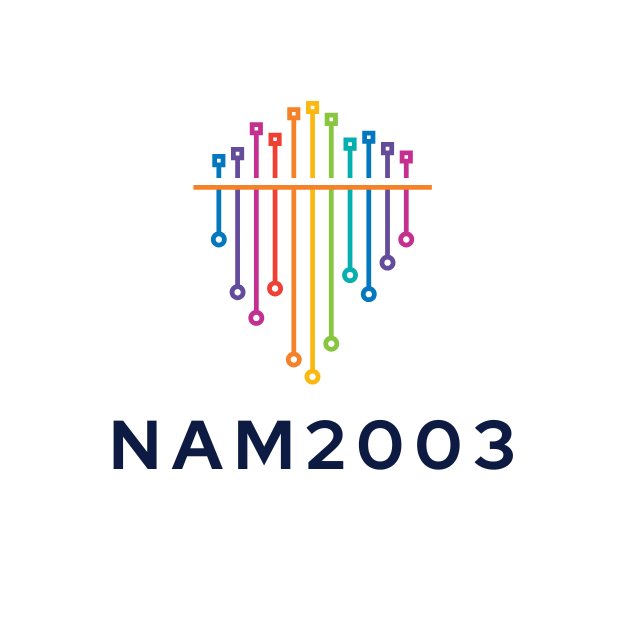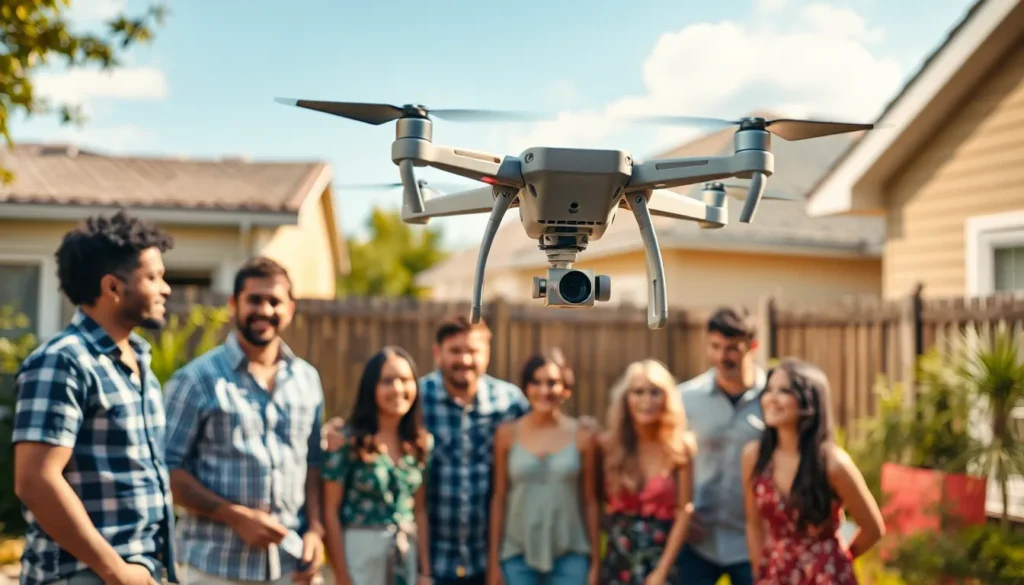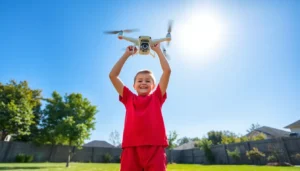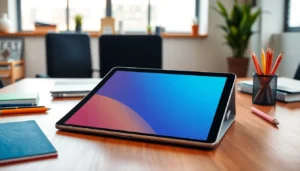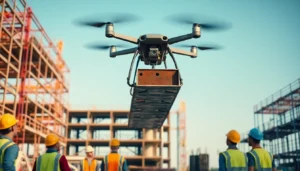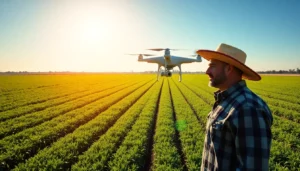Table of Contents
ToggleDrones are no longer just for the tech-savvy or the military; they’ve swooped into everyday life like a nosy neighbor with a high-definition camera. While these flying gadgets promise convenience and innovation, they also raise eyebrows about privacy. Imagine enjoying a peaceful backyard barbecue only to find a drone buzzing overhead, capturing your best moments—awkward or not.
Overview of Drones and Privacy
Drones have become commonplace, enhancing personal and commercial activities. Their ability to capture aerial imagery allows for various applications, including real estate marketing, agriculture monitoring, and emergency response. However, this accessibility creates significant privacy concerns.
Privacy intrusions occur when drones operate near residential areas, with high-resolution cameras capable of recording sensitive information. Surveillance capabilities raise alarms among individuals who value personal space and security. Certain regions have adopted regulations to curb unregulated drone flights, yet enforcement remains challenging.
Public sentiment fluctuates regarding drones’ presence in neighborhoods. Many support innovation, while others feel uneasy about being monitored. Privacy advocates argue that individuals should retain control over their personal data, advocating for laws that protect private property rights.
Some jurisdictions have established no-fly zones, particularly near schools, hospitals, and private property. Restrictions aim to balance technological advancement with community safety. Compliance with these regulations is essential for responsible drone usage and to gain public trust.
Technology firms and drone operators must prioritize consumer privacy. Implementing measures such as geo-fencing and limiting camera power can help safeguard individual rights. Education regarding responsible drone operation also plays a crucial role in fostering respectful use within communities.
Legal frameworks concerning drone applications vary widely across the United States. Some laws explicitly address privacy rights, while others focus on airspace regulation. Understanding these legal nuances is vital for both consumers and operators as they navigate the evolving landscape of drone usage and privacy.
Legal Framework Surrounding Drones
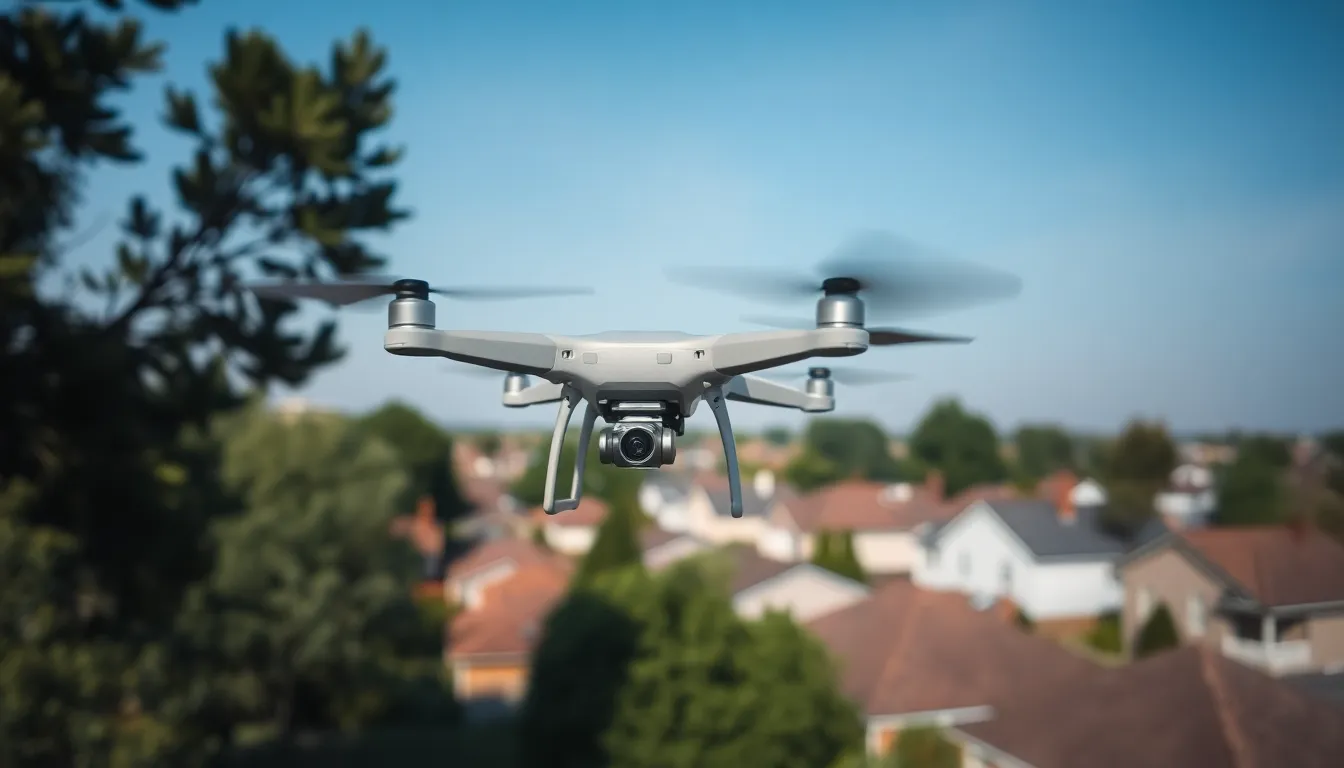
The legal landscape for drones encompasses various regulations designed to address privacy concerns and airspace management. These rules shape how drone operators can utilize their devices while safeguarding personal rights and property.
Federal Regulations
The Federal Aviation Administration (FAA) establishes regulations governing drone use in national airspace. This includes mandates for remote identification, enabling authorities to identify drone operators in real-time. Additionally, FAA rules restrict flight operations over certain areas such as stadiums and emergency scenes. Operators must comply with the Part 107 regulations for commercial use, which set parameters for licensing and safety. Federal laws also dictate that drones cannot be used to infringe on individuals’ privacy rights, highlighting the importance of responsible operation.
State and Local Laws
State and local laws significantly influence how drones can be used in specific regions. Many states have enacted legislation regulating drone activities, including restrictions on flying over private property without consent. Local governments may impose additional rules tailored to their communities, such as prohibiting drone use in parks or near schools. Understanding these regulations is essential for operators to avoid legal consequences and foster good relationships with local residents. Privacy advocates continue to push for stronger laws, emphasizing the need for clear guidelines concerning data collection and surveillance.
Impact of Drones on Personal Privacy
Drones increasingly impact personal privacy through enhanced surveillance and data collection capabilities. Their ability to capture high-resolution images and videos raises significant concerns among individuals regarding unauthorized monitoring.
Surveillance Capabilities
Surveillance capabilities of drones extend well beyond traditional security methods. With advanced cameras and sensors, drones can monitor large areas quickly and discreetly. They can easily access places that were once difficult for human observers, increasing the potential for invasive monitoring. In residential neighborhoods, drone operators can record video footage of people’s private activities without their knowledge. This capability triggers alarm among privacy advocates, who demand stricter controls on drone usage.
Data Collection Concerns
Data collection concerns emerge alongside drones’ growing use. Drones can gather sensitive information, including personal identifiable information and images of private property. This unregulated collection raises questions about how data is used and stored. Many consumers worry about the potential for misuse and unauthorized access to their information. Legal frameworks struggle to keep up with technology, resulting in gaps that allow for invasive practices. Increased advocacy for comprehensive regulations highlights the importance of protecting individual privacy in this evolving landscape.
Public Perception of Drones and Privacy
Public opinion about drones and privacy reflects a blend of enthusiasm and concern. With benefits seen in various sectors, apprehensions about surveillance persist.
Community Responses
Many communities express mixed feelings about drones. Supporters emphasize the potential for innovation, while critics focus on invasions of privacy. Neighborhood discussions often arise around safety and trust, revealing that awareness and education play critical roles in shaping opinions. Reports show that residents advocate for clear rules, encouraging local governments to create ordinances addressing drone usage to protect personal spaces. Concerns revolve around noise, visible surveillance, and unauthorized data collection. Important dialogues occur during town hall meetings, where local perspectives influence policymaking.
Media Representation
Media coverage significantly shapes public perception of drones. News stories often highlight negative incidents involving drones, reinforcing fears of invasive monitoring. Documentaries and pieces in popular culture portray both the positive contributions of drones and their potential risks, leading to a polarized view. Articles frequently discuss the balance between technological advancement and privacy rights, prompting debate among readers. As narratives shift, public awareness increases, driving demand for regulations that protect individual freedoms and define responsible drone operation. Effective communication strategies from both media and advocates can bridge understanding, helping communities adapt to the implications of widespread drone use.
Mitigating Privacy Risks
Drones present both opportunities and challenges concerning privacy. Addressing these risks involves a combination of technological solutions and robust policy recommendations.
Technological Solutions
Geo-fencing technology effectively limits drone access to predetermined areas. Operators can utilize this to prevent flights over sensitive locations, promoting compliance with privacy regulations. Flight data encryption offers another layer of security, safeguarding collected information from unauthorized access. High-resolution cameras can incorporate motion detection features, activating only in designated circumstances to minimize unnecessary surveillance. Implementing automatic alerts for potential privacy violations ensures immediate responses to unauthorized operations. By leveraging these innovations, drone operators can mitigate privacy concerns and enhance public trust.
Policy Recommendations
Establishing strict regulations is crucial to protecting privacy rights. Local governments should create ordinances that define permissible drone operations within residential areas. Mandatory notification requirements before drone flights can foster transparency and community awareness. Proposals to implement penalties for non-compliance would strengthen accountability among operators. Collaborating with privacy advocacy groups ensures that regulations reflect community values and concerns. Additionally, regular reviews of existing laws can keep pace with technological advancements, adapting to new privacy challenges. Such proactive measures will support responsible drone usage while safeguarding individual privacy rights.
The intersection of drones and privacy presents a complex challenge in today’s tech-driven world. As drones become more integrated into daily life their potential for convenience must be balanced with the need for privacy protection. With growing public concern about surveillance and data collection it’s essential for operators to adhere to established regulations and advocate for stronger privacy laws.
Technological advancements can help mitigate these risks but community awareness and education remain crucial. By fostering a culture of responsible drone use and encouraging dialogue among residents local governments and operators can work together to ensure that innovation doesn’t come at the expense of individual privacy rights. As this landscape evolves ongoing advocacy for clear guidelines will be key in shaping a future where both technology and privacy coexist harmoniously.
